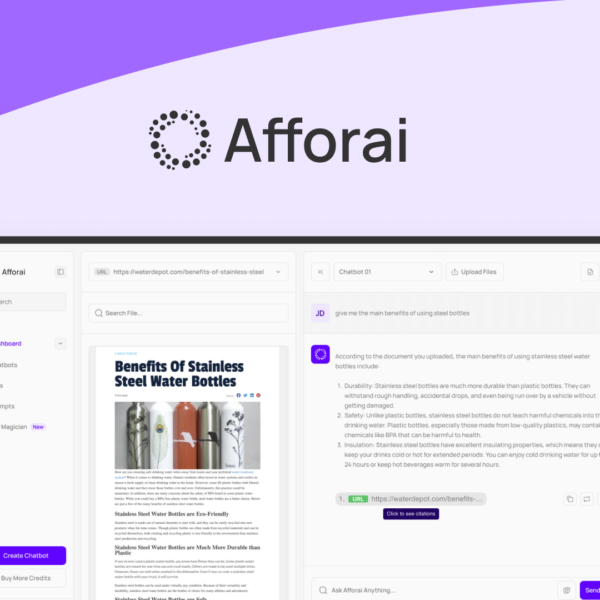If you’re intrigued by cybersecurity, especially the realm of Ethical Hacking, you’re in for a treat! This guide will take you through essential techniques and insights that every aspiring ethical hacker should know. Ready to dive in?
Introduction to Ethical Hacking
Ethical hacking is an important field in the world of cybersecurity. It involves legally breaking into systems to find vulnerabilities. This practice helps protect sensitive information from malicious hackers.
Those who work as ethical hackers are often called “white hats.” They use their skills to improve security for companies and institutions. By understanding how hackers think, ethical hackers can anticipate and prevent attacks.
Learning about ethical hacking covers many topics. You’ll discover tools and techniques used to test systems. Moreover, you will explore how to report findings in a way that helps organizations strengthen their defenses.
It’s also essential to know the law. Ethical hackers must follow legal rules. This ensures their work is not just beneficial but also conducted properly.
As technology grows, the demand for ethical hackers increases. Companies need skilled professionals to protect their data. This makes ethical hacking an exciting career choice for many.
The Importance of Ethical Hacking

The importance of ethical hacking cannot be overstated. In today’s digital world, cyber threats are everywhere. Companies face attacks daily that can harm their reputation and finances. Ethical hackers help prevent these issues by finding and fixing security holes.
These professionals use the same techniques as hackers, but for good. They identify weaknesses before cybercriminals can exploit them. This proactive approach is crucial for protecting sensitive data.
Another reason ethical hacking is vital is compliance. Many industries are subject to regulations regarding data security. Ethical hackers help organizations meet these requirements, ensuring they avoid costly penalties.
Ethical hacking also boosts customer trust. When customers know their data is secure, they feel safe doing business. This trust can lead to increased loyalty and sales.
Moreover, the skills of ethical hackers are in high demand. As technology grows, so do the risks. Companies need trained experts to stay ahead of cyber threats. A career in ethical hacking can be rewarding both personally and financially.
Understanding Cybersecurity Fundamentals
Understanding cybersecurity fundamentals is crucial for anyone interested in protecting digital information. Cybersecurity refers to the practices and technologies used to safeguard systems from attacks.
One key aspect is knowing different types of threats. Cybercriminals may use viruses, phishing, or ransomware to gain access to sensitive data. Each threat requires unique defenses to keep systems safe.
Another important factor is the concept of firewalls. Firewalls are security devices that monitor and filter incoming and outgoing traffic. They act as barriers between trusted networks and untrusted ones.
Encryption is also vital in cybersecurity. It transforms data into a code that is unreadable without a key. This protects information like passwords and credit card numbers from unauthorized access.
Moreover, user awareness plays a big role. Employees should be trained to recognize potential security risks. Simple actions like creating strong passwords can significantly enhance security.
Keeping software updated is essential too. Regular updates fix vulnerabilities and improve security. It’s a basic yet effective way to defend against attacks.
Types of Cyber Attacks

Types of cyber attacks can vary widely, and understanding them is key to staying safe. Each attack has unique methods and targets different vulnerabilities.
One common type is phishing. In this attack, criminals send fake emails to trick users into giving personal information. These emails often look like they’re from trusted sources.
Malware is another prevalent threat. This is software designed to harm your computer or steal data. It can be attached to emails or downloaded from untrusted sites.
Ransomware is a severe form of malware. It locks users out of their files and demands payment to regain access. This can be devastating for individuals and businesses alike.
Denial-of-Service (DoS) attacks overload servers, making websites unavailable. This can disrupt business operations and frustrate users trying to access services.
SQL injection is a method where attackers exploit vulnerabilities in databases. They can manipulate data or gain unauthorized access to sensitive information.
Finally, social engineering tricks people into giving away information or access. It relies on human psychology rather than technical exploits.
Top Tools for Ethical Hacking
Top tools for ethical hacking are crucial for anyone looking to enhance their cybersecurity skills. These tools help security professionals find and fix vulnerabilities in systems.
One popular tool is Nmap. It scans networks to discover connected devices. Nmap gives details about system vulnerabilities and services running on devices.
Metasploit is another essential tool. It’s a framework that provides information about security vulnerabilities. Ethical hackers use it to develop and execute exploit code.
Wireshark is a network protocol analyzer. It captures and displays data traveling through your network. This tool helps in analyzing traffic and detecting malicious activities.
Burp Suite is widely used for testing web applications. It helps find weaknesses in web security by scanning and manipulating requests.
John the Ripper is a tool for cracking passwords. It helps identify weak passwords that may be easily guessed or brute-forced.
Finally, Aircrack-ng focuses on network security. It is used for assessing Wi-Fi networks and breaking WEP and WPA encryption keys.
Creating a Safe Penetration Testing Lab

Creating a safe penetration testing lab is essential for ethical hacking practice. This environment allows hackers to test skills without risking real systems.
First, you need the right hardware. A good computer with sufficient memory and processing power is essential. Virtual machines (VMs) are also helpful. They let you run multiple operating systems on one machine.
Next, choose the software tools. Popular options include Kali Linux, which comes with many pre-installed hacking tools. This OS is tailored for security testing.
Set up your lab network wisely. It should be isolated from your main network. This prevents accidental damage to your home or work systems. Use a firewall to control the traffic in and out.
Include different operating systems in your testing environment. This allows testing on Windows, Linux, and macOS. Each OS presents unique challenges and vulnerabilities.
Furthermore, create target applications to test. Vulnerable web apps can be set up intentionally. Tools like DVWA (Damn Vulnerable Web App) offer great practice.
Finally, always follow ethical guidelines. Remember, the goal is to learn and protect, not cause harm. By creating a safe penetration testing lab, you can improve your skills while respecting the principles of ethical hacking.
Web Application Security
Web application security is vital in today’s digital world. Many businesses rely on web apps to serve customers. However, these apps can be targets for cyber attacks.
One of the main threats is Cross-Site Scripting (XSS). This happens when attackers inject malicious scripts into web pages. If successful, they can steal user data or session cookies.
Another concern is SQL Injection. Here, attackers send harmful SQL queries to databases. This can give them unauthorized access to sensitive information.
To protect against these risks, developers should use secure coding practices. Input validation is crucial. It ensures that data entered by users is safe and correct.
Additionally, implementing security headers is essential. These headers help prevent attacks like XSS and clickjacking by telling the browser how to behave.
Regularly updating software is also key. Many updates include security patches that address known vulnerabilities. Keeping everything up to date minimizes risks.
Finally, conducting regular security audits is a smart move. This helps identify potential weaknesses and ensures the web application remains secure.
Wi-Fi Hacking Techniques

Wi-Fi hacking techniques are important for understanding network security. Knowing these methods helps protect your own wireless networks.
One basic technique is packet sniffing. This involves capturing data packets transmitted over a network. Tools like Wireshark allow hackers to analyze the data and find weaknesses.
WEP cracking is another common method. WEP, or Wired Equivalent Privacy, is an outdated security protocol. Hackers use specific tools to exploit its weaknesses and gain access.
WPA/WPA2 cracking is a more advanced technique. These protocols are much stronger than WEP. However, they can still be cracked using dictionary attacks or brute force methods.
Evil Twin attack is a deceptive tactic. Here, hackers create a fake Wi-Fi access point that looks legit. Users connect unknowingly, allowing the hacker to steal information.
Finally, social engineering plays a role in Wi-Fi hacking too. Sometimes attackers trick users into revealing their passwords. This technique relies on manipulating people rather than exploiting technical weaknesses.
Social Engineering and Phishing
Social engineering and phishing are common tactics used by cybercriminals. Understanding these methods is key to staying safe online.
Social engineering involves manipulating people into sharing sensitive information. Attackers may pose as trusted individuals or organizations to gain access.
One popular method is phishing. This often occurs through fake emails that look legitimate. These emails ask users to click on links or provide personal details.
Phishing can also happen via text messages or phone calls. Attackers may use urgency, claiming there’s a problem that needs immediate attention.
Another technique is pretexting. Here, the attacker creates a false scenario to obtain information. For example, they may pretend to be from a bank to get account details.
Always be cautious about unsolicited requests for information. Verify the identity of the person before sharing anything. It’s smart to look for signs of phishing, like incorrect sender email addresses.
Using two-factor authentication adds an extra layer of security. This way, even if an attacker gets your password, they still need a second form of verification.
Network Scanning with Nmap

Network scanning with Nmap is a key technique in ethical hacking. Nmap, or Network Mapper, helps identify devices on a network. It also shows which services are running on those devices.
First, Nmap can discover hosts. By sending out packets, it detects active devices. This gives a clear view of what’s present in the network.
Next, Nmap can identify open ports. Open ports are potential entry points for attackers. Knowing these helps you secure your network better.
Another useful feature is service detection. Nmap can identify specific software running on devices. This helps in understanding potential vulnerabilities related to those services.
Nmap can also detect the operating system. This information is valuable for determining how to approach network security.
Using Nmap is straightforward. You can run commands in a terminal to start scanning. There are options for more detailed scans, including version detection and OS fingerprinting.
Finally, always use Nmap ethically. Make sure you have permission to scan any network. Unauthorized scanning can lead to legal issues.
Exploring Metasploit Framework
Exploring the Metasploit Framework is essential for ethical hackers. Metasploit is a powerful tool for penetration testing. It helps identify and exploit vulnerabilities in systems.
First, Metasploit allows you to write and execute exploits easily. You can use pre-built modules for different attacks. This saves time and effort during tests.
Next, Metasploit has an extensive database of exploits. You can search for specific vulnerabilities based on software versions. This helps tailor your testing approach.
Another useful feature is the Meterpreter shell. This is a stealthy payload that enables efficient communication between the attacker and target. It allows you to run commands and explore the machine.
Metasploit includes tools for social engineering as well. You can create phishing emails and fake websites. This helps test how users respond to social engineering attacks.
Using Metasploit requires some knowledge of network security. However, many tutorials and resources are available online. These can help beginners learn the basics quickly.
Always remember to use Metasploit ethically. You should only test systems you have permission to assess. Unauthorized use can lead to serious legal consequences.
Real-World Vulnerabilities

Real-world vulnerabilities are flaws in software or systems that attackers can exploit. Understanding these vulnerabilities is crucial for improving security.
One common example is buffer overflow. This happens when a program writes more data to a buffer than it can hold. Attackers can use this flaw to run malicious code.
Another real-world vulnerability is SQL injection. This occurs when users input malicious SQL commands into a web form. If not properly validated, these commands can manipulate the database.
Cross-Site Scripting (XSS) is another serious issue. Attackers inject harmful scripts into web pages. When users visit these pages, the scripts run and can steal their data.
Password management vulnerabilities are common too. Many users create weak passwords or reuse them across multiple sites. This makes it easier for attackers to gain access to accounts.
Additionally, outdated software is a significant risk. Software vendors regularly release updates to fix known vulnerabilities. Failing to install these updates leaves systems exposed to attacks.
To combat these issues, organizations should conduct regular security assessments. This helps identify and address vulnerabilities before attackers can exploit them.
SQL Injection Techniques
SQL injection techniques are common attacks used against web applications. This attack occurs when malicious SQL statements are inserted into input fields.
One basic technique is form-based SQL injection. Attackers enter SQL code in form fields, aiming to manipulate the database. For example, entering “‘ OR ‘1’=’1” can trick the system into returning all records.
Another technique is error-based SQL injection. Here, attackers gather information from database errors. These errors can reveal the structure of the database.
Union-based SQL injection is also popular. This technique uses the UNION SQL operator to combine results from multiple queries. Attackers can use it to extract hidden information from the database.
Additionally, there’s time-based blind SQL injection. This method doesn’t reveal data directly. Instead, attackers rely on the time taken by the server to respond to determine if the payload was successful.
To prevent SQL injection attacks, developers should always use parameterized queries. This method ensures user input is treated as data, not executable code.
Implementing web application firewalls (WAFs) can also protect against these attacks. WAFs monitor and filter out malicious requests before they reach the database.
Cross-Site Scripting (XSS)

Cross-Site Scripting (XSS) is a type of vulnerability found in web applications. It allows attackers to inject malicious scripts into websites. When users visit these sites, the scripts run in their browsers.
One common type of XSS is Stored XSS. Here, the malicious script gets saved on the server. When users access the affected page, the script automatically runs, stealing data or session cookies.
Another type is Reflected XSS. In this case, the malicious script is reflected off a web server. For example, an attacker might send a link that includes the harmful script. When users click it, their browser executes the script.
DOM-based XSS is another variation. This occurs when the vulnerable code on the client side manipulates the page’s Document Object Model (DOM). Attackers can exploit this to run scripts without involving the server.
To protect against XSS, web developers should sanitize user inputs. This means removing or escaping harmful characters. Additionally, using security headers like Content Security Policy (CSP) helps prevent unwanted scripts from running.
Regular security testing is essential too. Tools can help find vulnerabilities before attackers exploit them.
Command Injection Attacks
Command injection attacks are a serious risk for web applications. These attacks occur when an attacker inserts malicious commands into a vulnerable application.
Attackers typically exploit user input fields. For example, they might enter commands in a form that the application sends to the server. If the input isn’t properly validated, the attacker runs arbitrary commands on the server.
One common technique is taking advantage of poorly coded system calls. If a web application allows shell commands, an attacker can inject harmful commands that can compromise the system.
An example of this is using the ls command to list files. An attacker might enter something like ; rm -rf / to try to delete vital files.
Another vector for command injection is via API calls. If an API endpoint uses unsafe input processing, it can also become vulnerable.
To prevent command injection attacks, developers should use secure coding practices. Always validate and sanitize user inputs. Applying the principle of least privilege can also limit what commands a user can run.
Regular security testing and code reviews also help catch potential vulnerabilities before attackers can exploit them.
Defensive Strategies in Cybersecurity

Defensive strategies in cybersecurity are essential to protect systems from attacks. These strategies help organizations identify and mitigate potential threats.
One important strategy is firewalls. Firewalls act as a barrier between a trusted network and untrusted ones. They monitor incoming and outgoing traffic and can block harmful connections.
Another strategy involves encryption. Encrypting data ensures that sensitive information is protected. Even if attackers access the data, they can’t read it without the encryption key.
Regular software updates are also crucial. Keeping software up to date fixes known vulnerabilities. Attackers often exploit outdated systems to gain access.
Employee training is vital in defense strategies. Educating staff about phishing attacks and safe browsing practices reduces human errors that lead to breaches.
Implementing intrusion detection systems (IDS) can alert organizations to suspicious activities. These systems monitor network traffic for signs of threats and anomalies.
Lastly, having an incident response plan ready can significantly reduce damage during an attack. This plan outlines steps to take when a breach occurs, helping to restore operations quickly.
How to Become a Bug Bounty Hunter
How to become a bug bounty hunter is a great question for aspiring ethical hackers. This role lets you find vulnerabilities in software and earn rewards.
First, you need a solid understanding of computer systems and networks. Learning about web applications, databases, and programming languages is key. Common languages include JavaScript, Python, and PHP.
Next, familiarize yourself with security concepts. Understanding vulnerabilities like SQL injection and Cross-Site Scripting (XSS) helps in identifying issues.
Practice is essential for becoming a skilled bug bounty hunter. Look for online platforms that allow you to test your skills. Sites like Hack The Box or TryHackMe offer interactive environments to learn.
Once you feel confident, sign up for bug bounty programs. Many companies like Mozilla and Google offer programs where you can report bugs and receive rewards.
Networking with other hackers can also be beneficial. Join online communities and forums to share knowledge. Attending conferences can provide valuable insights and connections.
Finally, always follow the rules of the bounty program. Respect the guidelines and stay ethical. This ensures a good reputation in the community and helps you succeed in your bug hunting career.
Ethical Hacking Career Opportunities

Ethical hacking career opportunities are growing as businesses seek to improve cybersecurity. Organizations need skilled professionals to protect their sensitive data.
One popular role is a penetration tester. These experts simulate attacks to identify vulnerabilities in systems. They help businesses strengthen their defenses before real attackers can strike.
Another option is a security analyst. These professionals monitor networks for unusual activities and work to prevent breaches. They analyze potential threats and recommend security improvements.
Becoming a security consultant is also an option. Consultants advise organizations on best practices and assist with compliance. They may work with multiple clients, which keeps the job varied.
Many companies also hire incident responders. These specialists react quickly to security incidents. Their job is to minimize damage and recover from attacks.
Additionally, there’s a growing need for bug bounty hunters. These freelancers test software and websites for vulnerabilities. They earn rewards for finding and reporting issues.
To enter these careers, consider obtaining certifications. Popular ones include Certified Ethical Hacker (CEH) and Offensive Security Certified Professional (OSCP). These enhance your credibility and knowledge in the field.
Legal Considerations in Ethical Hacking
Legal considerations in ethical hacking are crucial for professionals in this field. Understanding the law helps ensure that ethical hackers operate safely and responsibly.
Before conducting any testing, always obtain permission. Working without consent can lead to serious legal consequences. It’s important to have a written agreement outlining the scope of the testing.
Next, familiarize yourself with relevant laws. Different countries have various regulations regarding cybersecurity. Understanding these laws will help avoid unintentional violations.
Ensure compliance with data protection laws, such as the GDPR in Europe. These laws govern how personal data should be handled during security testing.
Another key consideration is confidentiality agreements. These agreements ensure that sensitive information remains secure. They protect both the company and the ethical hacker.
Always report findings responsibly. This typically involves notifying the organization about vulnerabilities without publicly disclosing them prematurely.
Finally, keep documentation of your activities. Detailed records can help prove that you acted within legal boundaries. This is especially important if there are questions about your actions later.
Best Practices for Ethical Hacking

Best practices for ethical hacking are essential for conducting safe and effective security tests. Following these guidelines helps protect both the hacker and the organization.
First, always get written permission before starting any testing. This ensures that you have consent from the organization to conduct your work. Unauthorized testing can lead to legal trouble.
Develop a clear scope for your testing. Outline which systems or applications you’ll test and specify the methods you will use. This keeps everyone on the same page and helps manage expectations.
Document everything during the testing process. Taking detailed notes helps track your findings and provides valuable information later. Good records can also support your case if issues arise.
Use reliable tools for your work. Popular ethical hacking tools include Metasploit, Nmap, and Burp Suite. These tools can help detect vulnerabilities and assess security more effectively.
Practice good reporting. After completing the test, share your findings with the organization in a clear and concise manner. Highlight vulnerabilities and offer recommendations for improving security.
Finally, stay updated on the latest security trends and threats. Cybersecurity is constantly changing, so continuous learning is vital for success as an ethical hacker.
Conclusion and Next Steps
In this section, we summarize the key points and lay out the next steps for aspiring ethical hackers. Remember, ethical hacking offers many career opportunities in a growing field.
First, you should focus on gaining a solid foundation in cybersecurity principles. This includes understanding networks, systems, and various security threats.
Second, consider earning certifications. Popular options like the Certified Ethical Hacker (CEH) or Offensive Security Certified Professional (OSCP) can enhance your skills and employability.
Next, practice your skills in safe environments. Platforms like Hack The Box or TryHackMe offer practical exercises that can help you improve.
Networking with other professionals is also essential. Join online forums, attend cybersecurity conferences, and connect with peers on social media platforms.
Lastly, stay updated on the latest threats and security trends. The field of cybersecurity is always changing, and continuous learning is vital.




